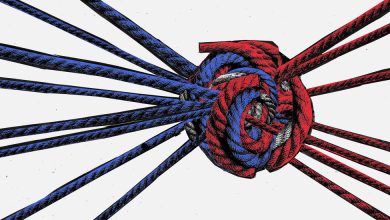If We Can Report on the Problem, We Can Report on the Solution

After 11 years and roughly 600 columns, this is our last.
The goal of Fixes was to highlight efforts to solve problems and the insights those efforts held for society. So, for our last column, we’re interviewing each other about some of the things we learned along the way.
David Bornstein: Tina, in a decade reporting on solutions, what’s the most important thing you learned?
Tina Rosenberg: This is a strange lesson for a column about new ideas and innovation, but I learned that they’re overrated. The world (mostly) doesn’t need new inventions. It needs better distribution of what’s already out there.
Some of my favorite columns were about how to take old ideas or existing products and get them to new people. As one of our columns put it, “Ideas Help No One on a Shelf. Take Them to the World.” There are proven health strategies, for example, that never went anywhere until some folks dusted them off and decided to spread them. It’s not glamorous to copy another idea. But those copycats are making a big difference.
David: I totally agree. The opportunity to learn from other places is hugely undertapped.
I mean, in the United States alone, there are over 3,000 counties. The chance that any one of them is struggling with big problems — mental health, addiction, climate change, diabetes, Covid-19, you name it — is pretty much 100 percent. But the odds that any place is actually using one of the most effective approaches to deal with its problems is quite low.
As you know, I used to be a computer programmer, and I’m still a stats nerd. With so many issues, there are “positive deviants” — say, 2 percent or 3 percent of actors who are getting significantly better results than the norm. Finding those outliers, figuring out what they’re doing that’s different, and sharing the knowledge can really help. I saw this in my reporting on childhood trauma, chronic homelessness and hospital safety, to name a few areas.
The other big lesson is simply that people genuinely like to be helpful. I was surprised how often stories we did about hard or disturbing issues — bullying, poverty, foster care or depression for instance — showed up on The Times’s lists of the most popular or most emailed articles. Readers shared those stories with others, including with family and friends directly affected by those problems. Many of the groups I reported on also told me that after a particular story came out they were contacted by people from other organizations, foundations or government offices who asked to learn more or make a visit. Journalists are often compared to watchdogs, but I began to see that we were sometimes acting like bees, helping to cross-pollinate ideas.
Tina: That connects to another lesson. So many creative solutions rely on people who are otherwise treated by public systems as powerless or even impediments. Our column headlined “Teaching Parents to Help Stop the ‘Summer Slide’” was about Springboard Collaborative, a Philadelphia-based organization that shows parents of all education levels — even those who can’t read — how to be effective reading teachers for their children. Schools in low-income communities often treat families as liabilities. They’re actually assets.
There were other columns that showed the impact of nonexperts, like one titled “Building for Real With Digital Blocks,” about a program that teaches people Minecraft so they can help plan neighborhood projects. Another, headlined “Hi, There. Want to Triple Voter Turnout?,” showed that the person most persuasive in bringing a voter to the polls is a friend who’s not involved in politics. OK, David, let’s talk about journalism. What did you learn from reporting on solutions for 11 years?
David: That you find what you’re looking for. If journalists go out looking for harmful actors, we’ll find them. On the other hand, if we go out looking for helpful actors — people who are, in good faith, trying to solve problems — we’ll find them, too. A lot of them. At one point I had a spreadsheet with 800 story ideas.
It made me think: As journalists, what should we be looking for? What information does society most need to do better against big problems?
Tina: We journalists have been conditioned to believe that “news” actually means “bad news,” and that you can’t talk about solutions without falling into public relations. Back in 2015, I wrote about the Ebola vaccine’s startlingly rapid development. Everyone knew about the Ebola epidemic in West Africa in 2014. But I was shocked by the number of readers who had no idea there was a successful vaccine. There’s a successful treatment for Ebola now, too — how many people know about that? Here’s a lesson: if we report on the epidemic, we should report on the cure.
David: I do think that, today in particular, people need journalism — not feel-good news, but rigorous reporting — that helps them see pathways to a better future. The news can be so overwhelming. More and more people are avoiding it. We need to balance news about problems and possibilities so that people can engage with reality with some sense of agency. Otherwise, they tune out, or deny it, or fall prey to misinformation.
Tina: Right. We should make clear that this brand of solutions journalism has grown immensely since we began in 2010. There are now many, many places to read, watch and listen to stories about solutions like the ones we covered. There’s the Solutions Story Tracker, a searchable database with more than 12,000 published articles from the Times and more than 1,500 other newsrooms. It’s from the Solutions Journalism Network, which we co-founded along with Courtney Martin, another Fixes contributor.
And Times readers who appreciate Fixes’ solutions approach should keep an eye out for the launch of Headway in the next few weeks. A new initiative from the Times newsroom, Headway will investigate the planet’s most significant challenges through the lens of progress — or the obstacles to progress. Headway is intended to start a public conversation about what humankind is doing to address the types of issues we’ve been covering in this column. We’ll be part of the conversation there. Come join us.
David Bornstein (@dnbornstein) and Tina Rosenberg (@tirosenberg) are co-creators of Fixes and co-founders of the Solutions Journalism Network. Mr. Bornstein is the author of “How to Change the World: Social Entrepreneurs and the Power of New Ideas.” Ms. Rosenberg is a former member of The Times’s editorial board and a writer for The Times Magazine. She is the author of “Join the Club: How Peer Pressure Can Transform the World.”
The Times is committed to publishing a diversity of letters to the editor. We’d like to hear what you think about this or any of our articles. Here are some tips. And here’s our email: [email protected].
Follow The New York Times Opinion section on Facebook, Twitter (@NYTopinion) and Instagram.





